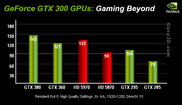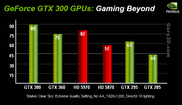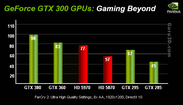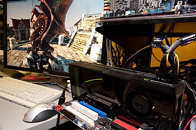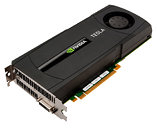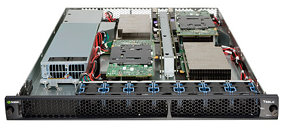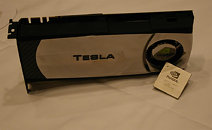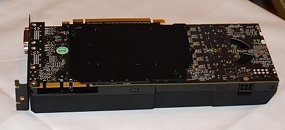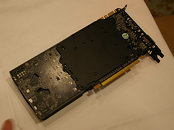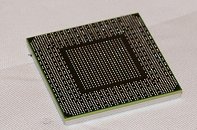
NVIDIA Fermi-based GeForce GPU Further Delayed?
NVIDIA's next-generation GeForce GPU based on the Fermi architecture is reportedly further delayed to March 2010, up from its originally expected time-frame of January. NVIDIA on its part maintained that Fermi-based GeForce GPUs will be released sometime in Q1 2010, and with a March launch, that would still stand true.
Fermi's development history is marked with late arrivals. The DirectX 11 compliant architecture was announced in October 2009 to counter the market-available DirectX 11 compliant ATI Radeon HD 5800 GPUs. Then in mid-November, the company released the first products based on the architecture - GPGPU accelerators under the NVIDIA Tesla HPC banner. An alleged working prototype GeForce accelerator was spotted around the same time, with word doing rounds that NVIDIA will be ready with the new GeForce GPU in early Q1, probably coinciding with the CES event. Faced with further delays, NVIDIA reportedly notified its partners that the new GPUs will be released to the marked only in March.
NVIDIA plans to launch the 40 nm Fermi-GF100 GPU which is DirectX 11 compliant and supports GDDR5 memory in March, and will launch a GF104 version. Till then, the mainstream-thru-performance segments will be left to be defended by GeForce GTS 250, GT 240, GT 220, 210, 9800 GT, against a fortified mainstream lineup by AMD consisting of ATI Radeon HD 5670/5650 (codenamed "Redwood"), and ATI Radeon HD 5450 (codenamed "Cedar"). These DirectX 11 compliant GPUs from AMD will be released in January.
Fermi's development history is marked with late arrivals. The DirectX 11 compliant architecture was announced in October 2009 to counter the market-available DirectX 11 compliant ATI Radeon HD 5800 GPUs. Then in mid-November, the company released the first products based on the architecture - GPGPU accelerators under the NVIDIA Tesla HPC banner. An alleged working prototype GeForce accelerator was spotted around the same time, with word doing rounds that NVIDIA will be ready with the new GeForce GPU in early Q1, probably coinciding with the CES event. Faced with further delays, NVIDIA reportedly notified its partners that the new GPUs will be released to the marked only in March.
NVIDIA plans to launch the 40 nm Fermi-GF100 GPU which is DirectX 11 compliant and supports GDDR5 memory in March, and will launch a GF104 version. Till then, the mainstream-thru-performance segments will be left to be defended by GeForce GTS 250, GT 240, GT 220, 210, 9800 GT, against a fortified mainstream lineup by AMD consisting of ATI Radeon HD 5670/5650 (codenamed "Redwood"), and ATI Radeon HD 5450 (codenamed "Cedar"). These DirectX 11 compliant GPUs from AMD will be released in January.
